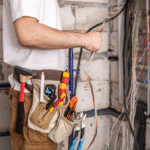In today’s fast-paced industrial environment, automation is the key to improving efficiency, reducing human error, and maximizing productivity. One of the most critical components in robotic and automated handling systems is the vacuum cup. Whether you’re dealing with pick-and-place systems, packaging lines, or CNC machinery, selecting the right vacuum cups for automation can significantly influence your system’s performance.
But with so many materials, shapes, and configurations available, how do you determine the best vacuum cup for your application? Let’s break it down step-by-step.
1. Understand the Material Being Handled
The first and most important factor is the nature of the object you’re trying to lift or move. Is it smooth or rough? Porous or airtight? Heavy or light?
Smooth, non-porous surfaces like glass, plastic, or metal typically require standard flat or bell-shaped vacuum cups.
Porous materials such as cardboard or wood need specialized vacuum cups with higher flow rates and possibly foam sealing rings to compensate for air leakage.
For delicate or easily marked surfaces like painted panels or polished items, softer materials like silicone or nitrile are ideal.
2. Choose the Right Vacuum Cup Material
The cup material affects both grip performance and wear resistance. Here are some common options:
- Nitrile rubber (NBR): Great oil resistance and suitable for general-purpose handling.
- Silicone: Excellent for high-temperature environments and food-safe applications.
- Polyurethane: Offers high durability and elasticity, ideal for fast-paced automation lines.
- EPDM: Resistant to UV and ozone, suitable for outdoor or harsh environments.
Your choice of vacuum cups for automation should align with the specific environmental and material demands of your operation.
3. Decide on the Shape and Size
Vacuum cups come in a variety of shapes, each with its strengths:
Flat cups are suitable for flat, smooth surfaces and provide quick engagement and release.
Bellows (accordion-style) cups offer flexibility and compensate for slight height differences or uneven surfaces.
Oval cups provide a stronger grip on long, narrow parts such as sheet metal or tubes.
The cup size should correspond to the weight and surface area of the object. Larger cups offer more holding force but may be slower to release, while smaller ones provide faster cycle times.
4. Evaluate the Load and Speed Requirements
High-speed automation processes require cups with fast response times and minimal deformation. In contrast, heavy-duty applications call for robust vacuum cups with strong holding power and minimal flex.
Make sure to assess the load in terms of both weight and acceleration. The faster a robotic arm moves, the stronger the grip must be to avoid slippage.
5. Consider Mounting and Connection Options
The connection type (threaded, push-in, or quick-connect) must be compatible with your existing automation system. Also, ensure that the mounting direction (vertical or angled) supports the motion path of the robotic arm or linear actuator.
Some systems benefit from spring-loaded mounts, which help absorb shock and adjust to irregular surfaces.
6. Account for Safety and Maintenance
In automated environments, consistent uptime is crucial. Choose vacuum cups that are:
– Durable and wear-resistant
– Easy to replace
– Readily available from suppliers
Safety is also a concern, especially if your automation line handles fragile or hazardous materials. Make sure your vacuum system includes sensors to monitor cup engagement and vacuum pressure.
Final Thoughts
Selecting the right vacuum cups for automation isn’t just about picking a cup that sticks — it’s about optimizing your entire workflow. From ensuring a secure grip on your parts to maintaining high speeds and precision, the vacuum cup plays a surprisingly pivotal role in automation performance.
By carefully evaluating your application needs—material, surface, speed, and environmental conditions—you can choose a vacuum cup that enhances productivity, reduces downtime, and keeps your automation system running at peak efficiency.
If you’re looking for expert guidance or high-quality vacuum cups tailored to your needs, reach out to a trusted
supplier who understands the ins and outs of industrial automation.


